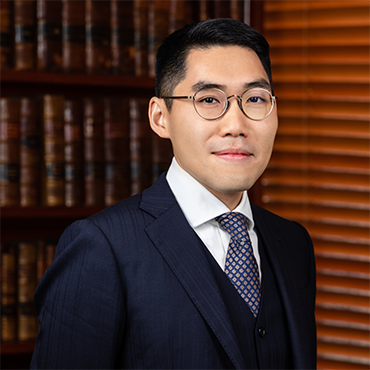Acropolis Ltd v W&Q Investment Ltd [2024] 2 HKLRD 912, [2024] HKCFI 1065 (Jeff Yau)
Jeff Yau represented the petitioner and the 14th respondent in Acropolis Ltd v W&Q Investment Ltd [2024] 2 HKLRD 912, [2024] HKCFI 1065.
P petitioned for the winding up of C. Upon P’s application, K and H were appointed as provisional liquidators (PLs) in respect of C. Before the PLs were appointed, they were told by X (a director of C) that they were not expected to play an active role in the running of C. The PLs provided draft fee quotations in the range of $500,000 to $800,000, and upon being told by C’s solicitor about counsel’s concerns that the fees were low, gave a revised fee quotation in the range of $1.5 million to $2.5 million. C applied for a review of taxation of the PL’s fees, during which a dispute arose between P and C on the one hand and the PLs on the other as to whether the PLs had reached an agreement or mutual understanding with P that upon PLs’ appointment as C’s joint provisional liquidators, they would cap their remuneration at $800,000. The PLs denied the existence of any such agreement or understanding. A trial of the following two preliminary issues were ordered: (i) whether such agreement or understanding had been reached; and (ii) if so, whether it should be taken into account by the Court in determining C’s application for review of taxation.
Held, that the PLs had an understanding with P that they would cap their remuneration at $800,000 and that such understanding should be taken into account in determining C’s application for review of taxation, that:
- (1) The documentary evidence militated against the existence of an oral contract between X and the PLs that fees would be capped at $800,000 with no room for adjustment, but there was an understanding between them that the PLs would keep their fees at $800,000 as much as possible. X met with K to stress the importance of keeping the costs of the provisional liquidation low and insisted that K gave a rough estimate of the cost. The ordinary reasonable person would have understood that the estimated range of $500,000 to $800,000 was a serious one. Such understanding would not have ruled out the possibility of the PLs charging more than $800,000, but there would have to be compelling circumstances. While the PLs made it clear that they would be charging on a time-cost basis, that was not supposed to be the equivalent of a blank cheque. (See paras.35–44.)
- (2) The circumstances underlying the later revision of the fee range to between $1.5 million and $2.5 million strengthened the inference that there was an understanding. When C’s solicitor suggested that the fee range be increased to improve the optics of the application for C’s provisional liquidation, K did not ask for time to re-calculate the original quotation. K was simply accommodating counsel’s concerns. The increased range was for external appearance (“on paper”) only. Internally, as far as K was concerned, the original range of $500,000 to $800,000 remained the understanding. (See para.45.)
- (3) The understanding could not fetter the Court’s discretion as to what would be a fair remuneration for the PLs as officers of the Court, but it would be a weighty factor to be considered in the taxation of their charges. The Maxwell principles did not constrain what a court may examine when determining whether charges claimed by a provisional liquidator had been “properly incurred” for the purpose of r.28(3) of the Companies (Winding-up) Rules (Cap.32H, Sub.Leg.). As a matter of principle, the Master must be entitled to assess whether given the understanding, the PLs were properly claiming more than the cap (Mirror Group Newspapers Plc v Maxwell [1998] BCC 324, Re Peregrine Investments Holdings Ltd [1998] 2 HKLRD 670 considered). (See paras.48–50.)
- (4) The PLs never approached X to alert him to the possibility that their charges were likely to significantly exceed $800,000 and to explain why. Thus, in taxing the PLs’ costs in light of the understanding, the Master would have to determine whether the specific activities for which charges or fees were being claimed were truly necessary and the extent to which (if at all) such activities could have been mitigated or dispensed with altogether. (See paras.51–52.)
- (5) The Court had deep concern with the revision of fees to a range of $1.5 million to $2.5 million which was done purely as window dressing. P’s counsel were not told that despite the apparent upward revision, it remained P’s understanding that the PLs would not be charging more than the $800,000 upper limit that P’s counsel had queried. Opposing shareholders and the Court were also not informed of the true position. The Court was thus misled, when appointing the PLs, into thinking that the latter were likely to cost more than the understanding reached with P. The lack of transparency was unacceptable. (See paras.53–55.)
[The above is excerpted from the headnote to the report in HKLRD.]


